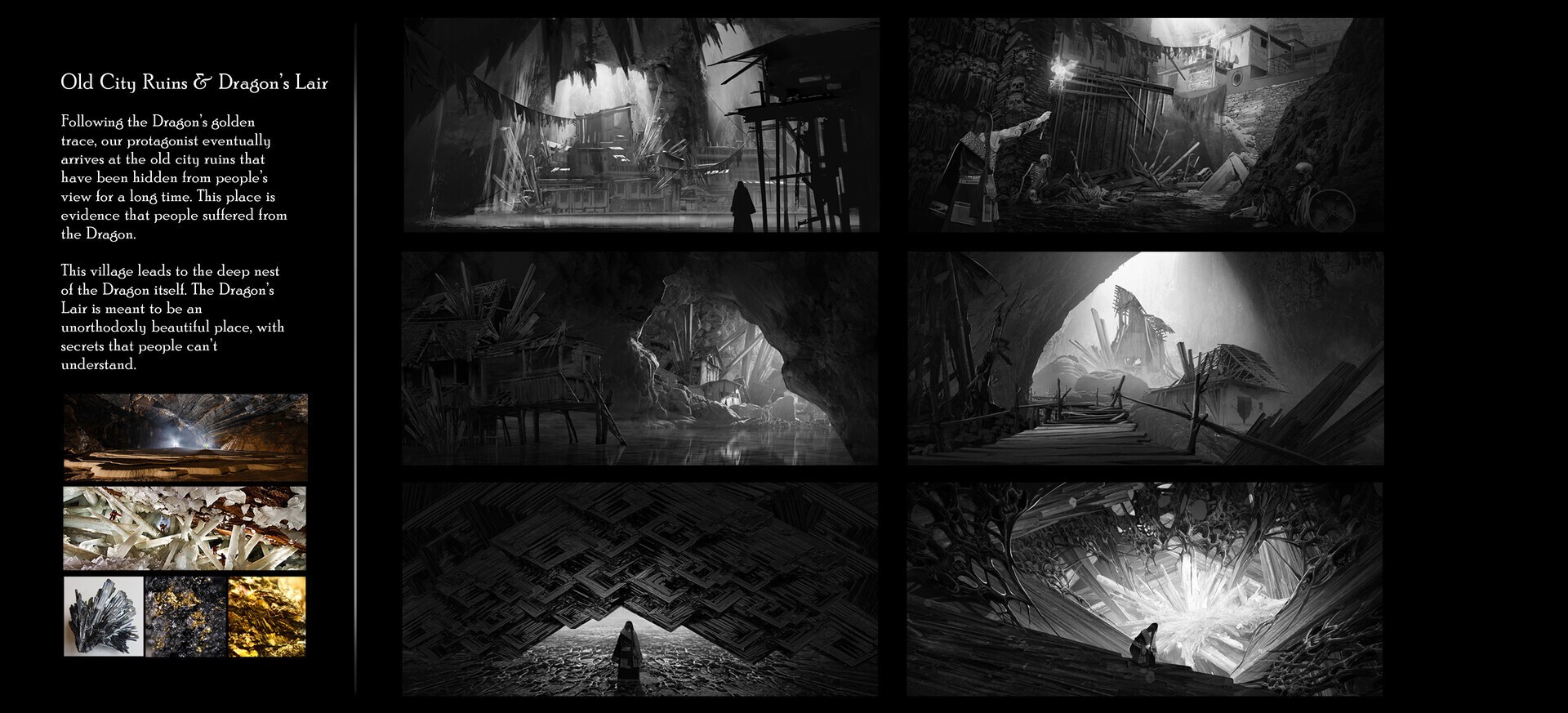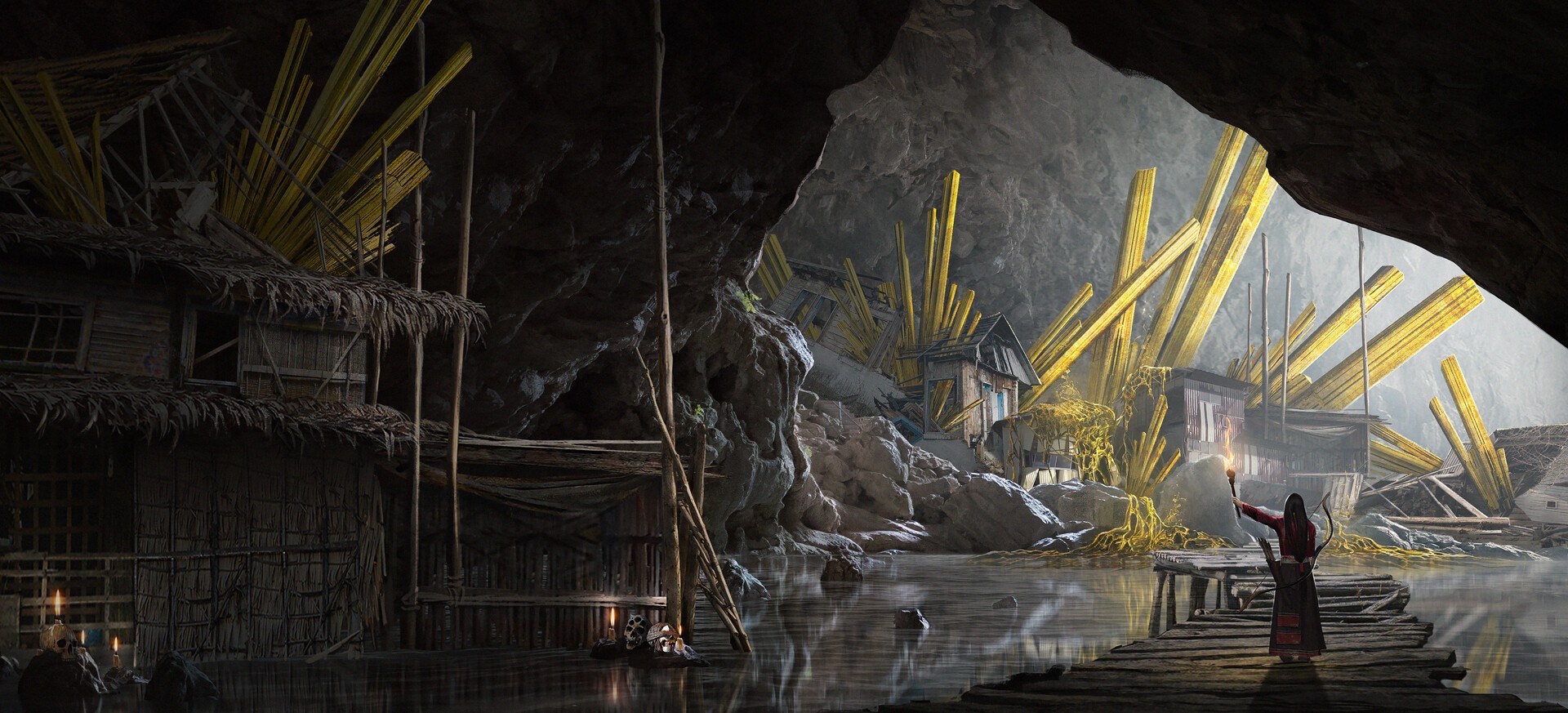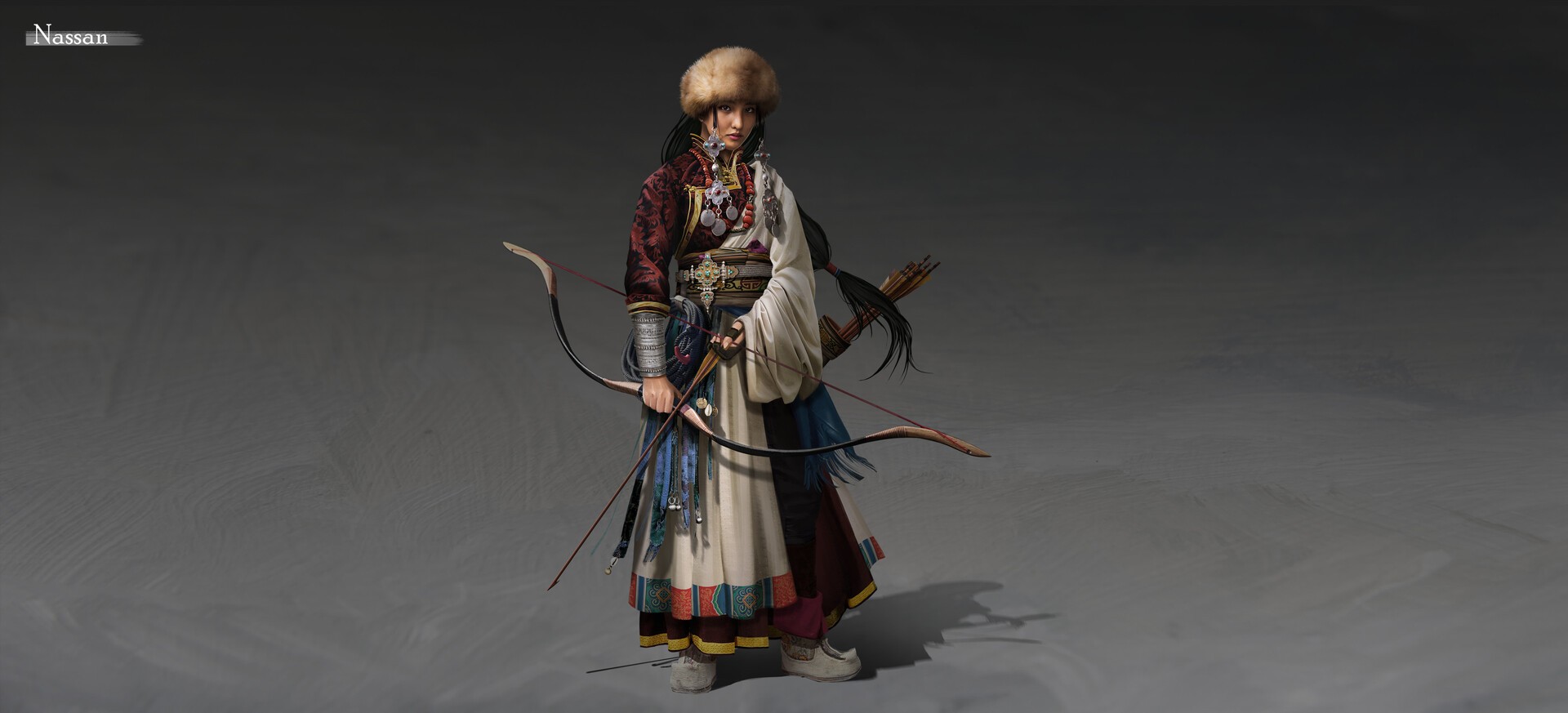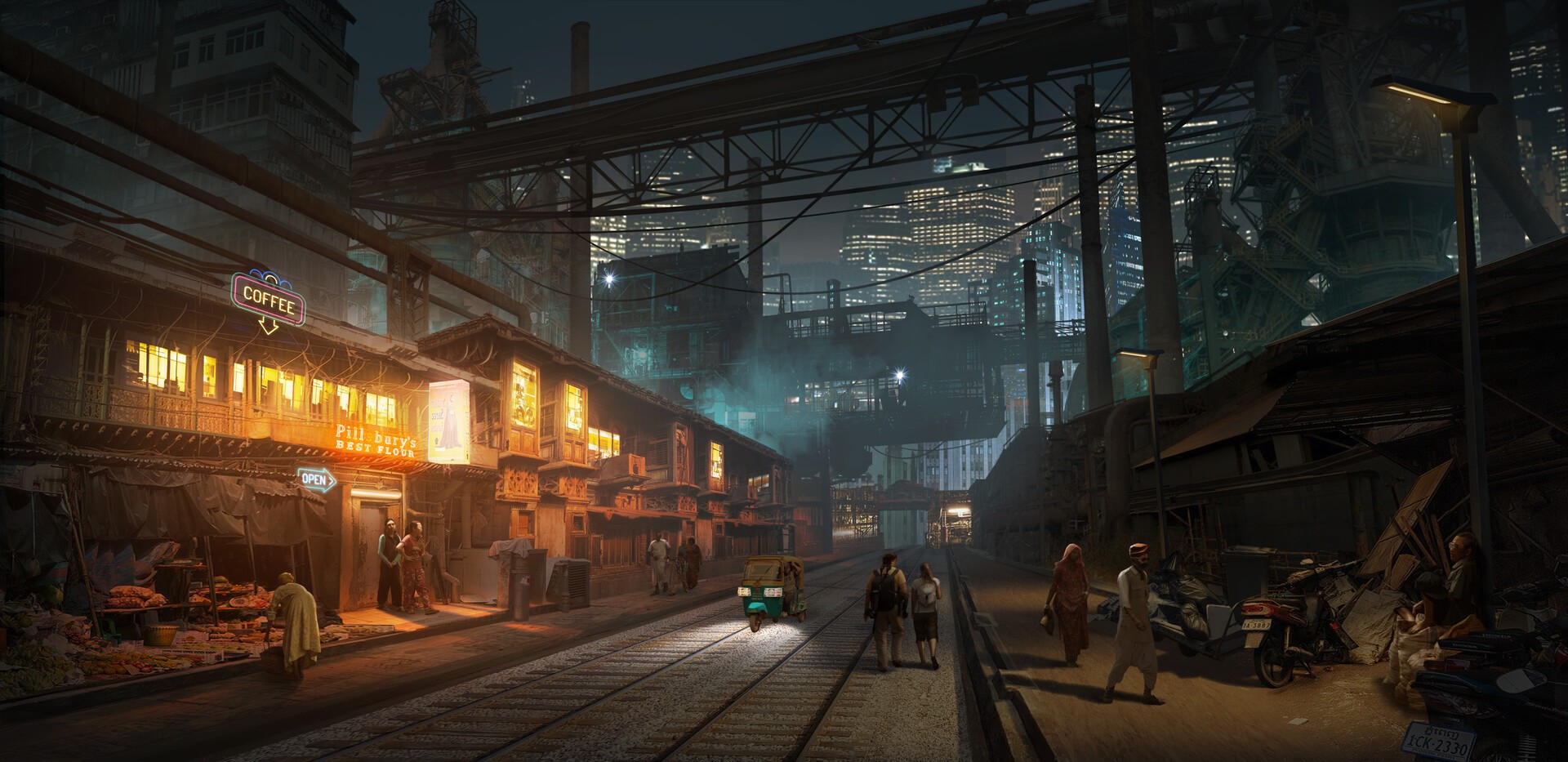We caught up with the brilliant and insightful Cici Zhu a few weeks ago and have shared our conversation below.
Cici, looking forward to hearing all of your stories today. When did you first know you wanted to pursue a creative/artistic path professionally?
My name is Cici Zhu, and I hail from a small city in China. Five years ago, I embarked on a life-changing journey to the United States, where I recently completed my bachelor’s degree at ArtCenter College of Design. Presently, I am pursuing my passion as a freelance concept artist.
As a young girl, my mother diligently enrolled me in various hobby classes, ranging from dancing and piano to art and mental abacus. It was clear she sought to nurture my talents. Among these activities, I discovered a deep fascination for art, leading me to explore Chinese painting, calligraphy, traditional drawing, and painting. Although my artistic inclination was evident, my understanding of art was initially confined to the realm of fine art.
A pivotal moment in my life came during a summer vacation in middle school when I first experienced the Assassin’s Creed II franchise. The game’s captivating landscapes and enthralling adventure stories left me in awe, but what truly astonished me was the concept artwork behind the game. Back in 2010, digital art and video games were relatively unknown in the Chinese art community, making it hard to believe that numerous brilliant artists were responsible for creating such stunning visual experiences for players.
Among the talented artists involved in the game, one individual captured my attention like no other – Donglu Yu. Hailing from China, she pursued her education and career in video game art in Canada. Her artwork was a testament to vividness and exquisiteness, portraying a world and possibilities I had never seen or imagined before. It was at that moment I became certain of my desire to become a concept artist for video games, just like her.
With a resolute determination to realize my dream, I set ArtCenter College of Design as my primary goal. Learning about the numerous masters in the film, animation, and video game industry who had graduated from ArtCenter, such as Sid Mead and Scott Robertson, further solidified my choice. Fortunately, I was accepted into the Entertainment Design undergraduate program, marking the beginning of a challenging yet immensely rewarding four-year journey.
Although I have now completed my studies at ArtCenter, my pursuit of artistic excellence remains ceaseless. I am aware that achieving my dream demands continuous growth and dedication. Nonetheless, I am grateful to have taken a significant step forward and look forward to the exciting possibilities that lie ahead.


As always, we appreciate you sharing your insights and we’ve got a few more questions for you, but before we get to all of that can you take a minute to introduce yourself and give our readers some of your back background and context?
The role of concept artists is crucial in the early stages of production for various projects, including video games, animation, TV shows, and films. In the context of video game production, concept artists play a pivotal role in creating visual designs and artwork. They make a wide range of artistic decisions that shape the game’s elements, such as character appearance, weapon designs, vehicle functionality, and the overall mood of the story.
The concept art serves as a foundation for the project, providing essential guidance for 3D artists who transform the ideas into tangible models. These 3D models are then integrated into the game by the collaboration of 3D artists and programmers. As the game undergoes coding, testing, and marketing, it gradually evolves into a complete and immersive experience, ready for launch.
Concept artists may specialize in various aspects of their craft, and my focus lies in environmental design. Specifically, my job centers around designing landscapes, architecture, interior spaces, and environmental props within the game world. Often, I am given specific instructions and requirements for a particular area, which may include details about its function, layout, or map.
My task involves envisioning and creating the appearance of objects that populate this space, such as rocks, vegetation, buildings, roads, and furniture. The goal is to craft a believable and captivating environment, making it as visually appealing and interesting as possible. Through my work, I contribute to building a rich and immersive gaming experience for players to explore and enjoy.

What do you find most rewarding about being a creative?
Being an artist is an incredibly fulfilling journey for me, as it allows me to continuously express myself through art and revel in the exploration of boundless possibilities.
Previously, I firmly believed that art was an essential aspect of our lives—a means to convey civilizations, an integral component of visual entertainment, and a pursuit that embodied a higher belief. However, my perspective was challenged by the emergence of AI art technology.
The recent advancements in AI art have sent shockwaves through the art community. On one hand, the astonishing efficiency with which AI generates diverse artwork is both impressive and unbelievable, and its rapid learning capabilities are unparalleled. On the other hand, the source from which AI learns is often the work of other artists, raising questions about originality and copyrights. This problematic situation has led to heightened stress for artists, as some programmers illicitly steal artwork for resale.
Regrettably, I found myself among the victims of AI art when I lost my first job to a studio’s decision to opt for cheap and rapid AI-generated art. This incident not only shattered my expectations for a promising start but also endangered my visa status as the studio violated our agreement.
Overwhelmed with frustration, I questioned the value of my years of learning and practice in art. The realization that AI could produce high-quality images in mere seconds made my efforts seem futile. I even questioned the wisdom of choosing art as my career and life goal, succumbing to a period of negative thoughts.
However, during this challenging phase, I continued to doodle and gradually came to a profound understanding. Regardless of AI’s extensive presence in the artistic world, it can never undermine the true essence of art. Art holds a deeply personal meaning for each individual. For me, it transcends mere diplomas, livelihoods, or social media acclaim—it is a language through which I perceive the world, a medium to share the stories within my mind, and a vessel to express my emotions and thoughts. No matter how AI advances, it can never extinguish people’s passion for art or hinder them from creating their unique masterpieces.
Embracing this realization, I felt a newfound sense of ease and liberation. My work regained its value, and my passion for art was reignited. Despite the challenges that may arise on the artistic path, I always manage to find joy in the process. This joy is irreplaceable and impervious to the influence of AI or any external factor.

Is there something you think non-creatives will struggle to understand about your journey as a creative? Maybe you can provide some insight – you never know who might benefit from the enlightenment.
I believe that for amateurs, pursuing an art hobby as a professional career can be unexpectedly challenging.
First and foremost, concept art is a high-pressure job that demands continuous practice and an unyielding spirit. It encompasses various themes, including character design, environment design, hard-surface design, storyboarding, and keyshots, etc. In terms of styles, there are exaggerated and stylized art, realistic styles, and many more. As for the implementation methods, there are 2D, 3D, physical model building, and a multitude of different software and packages options within 2D and 3D. To establish oneself in the field of concept art, one must constantly improve their aesthetic and design abilities and continuously learn new things, which can be very demanding.
Many people assume that concept artists working in the gaming industry have an enjoyable job, as they have the opportunity to tell their imaginative stories and showcase what they find interesting. However, the reality is different. Concept artists serve to provide problem-solving solutions for art directors and directors, ensuring the smooth completion of movie/game/animation projects. But please note that these projects do not belong to the artists themselves. This means that many times, designs that artists find cool may not necessarily be favored by the director or art director, and the stories they want to tell may have nothing to do with the artists’ personal interests. Therefore, it’s common for designers to complain that they are constantly drawing things they neither care about nor have any interest in.
Regardless of the challenges, engaging in concept art is still highly rewarding. The process of exploring various visually appealing and innovative experiences is immensely fulfilling. However, we must have a clear understanding of the role of concept artists in order to integrate ourselves better into this industry.


Contact Info:
- Website: https://www.artstation.com/cicizhu
- Instagram: https://www.instagram.com/incrediblecici.psd/
- Linkedin: https://www.linkedin.com/in/cici-zhu-8b3246214/
Image Credits
These artworks are created by myself.


